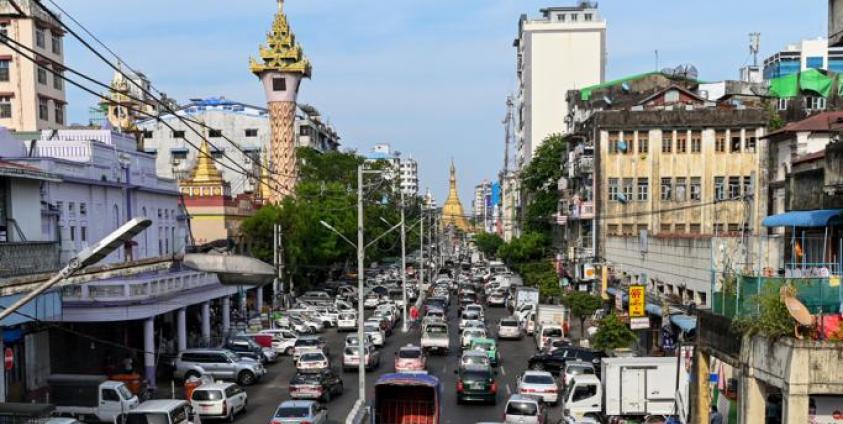The mopeds are back in Hanoi, cars once more clog Karachi's streets and gridlock has returned to Beijing's ring roads -- as lockdowns caused by the coronavirus ease, the temporary respite from traffic has also been broken.
Asia's megacities are notoriously traffic-choked, inflicting dizzying pollution and enervating daily delays on their residents.
Yet for a few weeks pedestrians ruled the roads as lockdowns, curfews and self-isolation prodded by fears over the Covid-19 pandemic did the once unthinkable and kept hundreds of millions of people indoors.
For a while, the entrance to Yangon's golden Sule pagoda emerged from behind the swirl of buses and banged-up cars.
Bangkok's air quality momentarily turned "clean" as the vehicles squeezing along its main thoroughfares vanished, while in Beijing overpasses were emptied after China banned movement as it grappled with the spread of the virus.
But restrictions have eased in most of Asia's seething cities as nations tamp down the first wave of the virus and economies heavily reliant on the movement of people -- and famed for a vibrant street life -- grind back into gear.
Mopeds again fill every available space between the cars around Hanoi's Hoan Kiem lake, a buzzing menace to people trying to cross the road.
In Hong Kong, revellers are slowly returning to the streets of Lan Kwai Fong, a popular drinking area in the central business district that went quiet during a temporary ban on the sale of alcohol in bars and restaurants.
Karachi once more teems with rickshaws and buses while normal business has resumed at the cross-harbour bridge in Sydney.
And in Wuhan in China's Hubei province, where the virus emerged last year, vehicles once again clog the city's highways and roads as life returns to normal.








